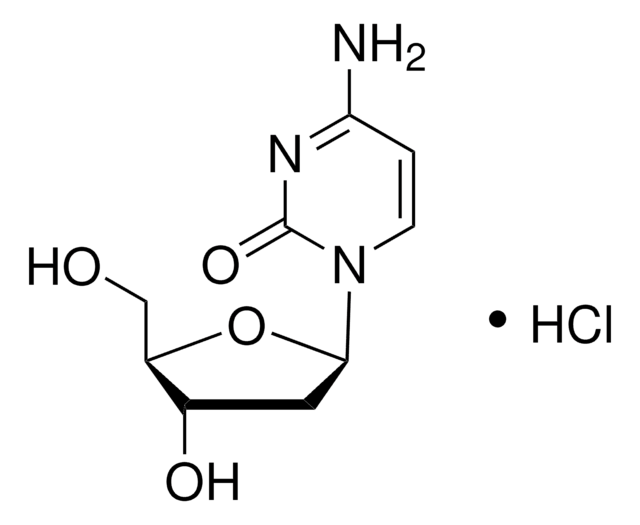C2997
Cytosporone B
≥98% (HPLC), powder, nuclear receptor Nur77 agonist
Synonym(e):
3,5-Dihydroxy-2-(1-oxooctyl)benzeneacetic acid ethyl ester, Csn-B, Csn-B; 3,5-Dihydroxy-2-(1-oxooctyl)-benzeneacetic acid, ethyl ester
About This Item
Empfohlene Produkte
product name
Cytosporone B, ≥98% (HPLC)
Qualitätsniveau
Assay
≥98% (HPLC)
Form
powder
Farbe
white to off-white
Löslichkeit
DMSO: >20 mg/mL
Lagertemp.
−20°C
SMILES String
CCCCCCCC(=O)c1c(O)cc(O)cc1CC(=O)OCC
InChI
1S/C18H26O5/c1-3-5-6-7-8-9-15(20)18-13(11-17(22)23-4-2)10-14(19)12-16(18)21/h10,12,19,21H,3-9,11H2,1-2H3
InChIKey
UVVWQQKSNZLUQA-UHFFFAOYSA-N
Anwendung
- as a positive control and NR4A1 agonist in NR4A1 reporter gene assay
- for Nr4a1 activation
- to treat OVX mice and study its effect on migration of osteoclast precursor
Biochem./physiol. Wirkung
Nur77 is a nuclear receptor/transcription factor. A physiological ligand for Nur77 is as yet unknown, but there is increasing interest in Nur77 because of its known activities. Translocation of Nur77 from the nucleus to mitochondria initiates cell apoptosis, making it a potential target for cancer treatment. Nur77 is also involved in glucose homeostasis; it induces genes involved in gluconeogenesis. Csn-B physically binds to Nur77 and activates its transactivational activity and translocation to mitochondria to induce apoptosis. It inhibits cancer cell proliferation and tumor growth.
Nur77 is a nuclear receptor/transcription factor with no known physiological ligand, but there is increasing interest in Nur77 because of its known activities. Translocation of Nur77 from the nucleus to mitochondria initiates apoptosis, making it a potential target for cancer chemotherapy. Nur77 also induces genes involved in gluconeogenesis. Csn-B activates the Nur77 translocation to mitochondria to induce apoptosis, inhibiting cancer cell proliferation and tumor growth.
Signalwort
Warning
H-Sätze
Gefahreneinstufungen
Acute Tox. 4 Oral
Lagerklassenschlüssel
11 - Combustible Solids
WGK
WGK 3
Flammpunkt (°F)
Not applicable
Flammpunkt (°C)
Not applicable
Analysenzertifikate (COA)
Suchen Sie nach Analysenzertifikate (COA), indem Sie die Lot-/Chargennummer des Produkts eingeben. Lot- und Chargennummern sind auf dem Produktetikett hinter den Wörtern ‘Lot’ oder ‘Batch’ (Lot oder Charge) zu finden.
Besitzen Sie dieses Produkt bereits?
In der Dokumentenbibliothek finden Sie die Dokumentation zu den Produkten, die Sie kürzlich erworben haben.
Unser Team von Wissenschaftlern verfügt über Erfahrung in allen Forschungsbereichen einschließlich Life Science, Materialwissenschaften, chemischer Synthese, Chromatographie, Analytik und vielen mehr..
Setzen Sie sich mit dem technischen Dienst in Verbindung.







